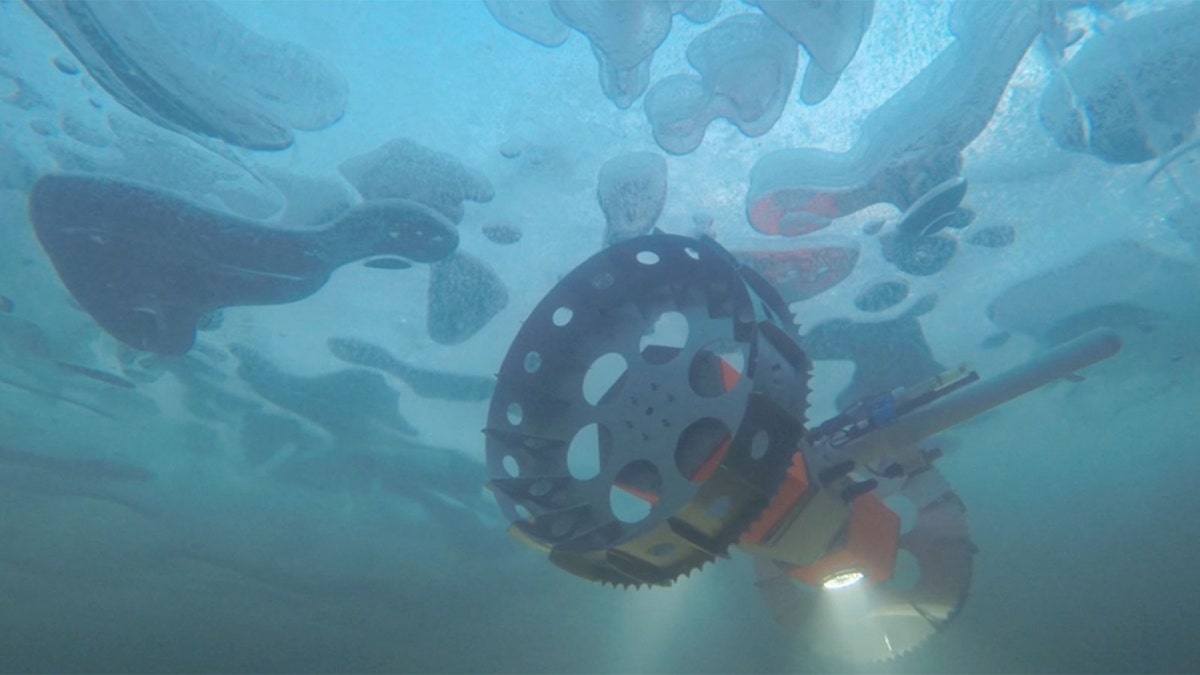Fox News Flash top headlines for Nov. 21
Fox News Flash top headlines for Nov. 21 are here. Check out what's clicking on Foxnews.com
NASA recently showed off its new underwater rover that it hopes one day could help in exploring alien ocean worlds in the search for life.
The robot, known as Buyant Rover for Under-Ice Exploration (BRUIE), is designed to crawl under an ice cap. Right now, it is being tested in Antarctica, in hopes one day it could go to ocean worlds such as Saturn's moon, Enceladus, or Jupiter's moon, Europa.
"The ice shells covering these distant oceans serve as a window into the oceans below, and the chemistry of the ice could help feed life within those oceans," Kevin Hand, NASA JPL lead scientist on the BRUIE project, said in a statement. "Here on Earth, the ice covering our polar oceans serves a similar role, and our team is particularly interested in what is happening where the water meets the ice."

An underwater rover called BRUIE is being tested in Antarctica to look for life under the ice. Developed by engineers at NASA-JPL, the robotic submersible could one day explore ice-covered oceans on moons like Europa and Enceladus. BRUIE is pictured here in an arctic lake near Barrow, Alaska in 2015. (Credit: NASA JPL)
NASA DETECTS WATER VAPOR ON JUPITER'S MOON EUROPA
Earlier this month, the space agency announced it had detected water vapor above the surface of Europa for the first time.
The space agency said that the waters in Antarctica are the closest on Earth to those that would be seen on an icy moon, such as Europa or Enceladus, making them "an ideal testing ground." The rover, which is 3 feet long and has two wheels that allow it to roll under the ice, is able to take pictures and collect data where water and ice meet, known as the "ice-water interface."
"We've found that life often lives at interfaces, both the sea bottom and the ice-water interface at the top," said lead engineer Andy Klesh in the statement. "Most submersibles have a challenging time investigating this area, as ocean currents might cause them to crash, or they would waste too much power maintaining position.
"BRUIE, however, uses buoyancy to remain anchored against the ice and is impervious to most currents," Klesh added. "In addition, it can safely power down, turning on only when it needs to take a measurement, so that it can spend months observing the under-ice environment."
BRUIE will also have instruments to measure "parameters related to life," including dissolved oxygen, water salinity, pressure and temperature mechanical engineer Dan Berisford said.

(Credit: NASA JPL)
NASA MISSION TO EUROPA COULD 'POSSIBLY SENSE LIFE'
In August, NASA officially confirmed a mission to Jupiter's moon Europa, a trek that could answer whether the icy celestial body could be habitable for humans and support life.
The space agency's goal for the Europa Clipper mission is to launch as soon as 2023, but its baseline commitment "supports a launch readiness date by 2025."
The conditions on Europa have been previously likened to exoplanet Barnard B, a "super-Earth" 30 trillion miles from Earth. It likely has a surface temperature of roughly 238 degrees below zero and may have oceans underneath its icy surface, according to a July 2018 statement from NASA.

